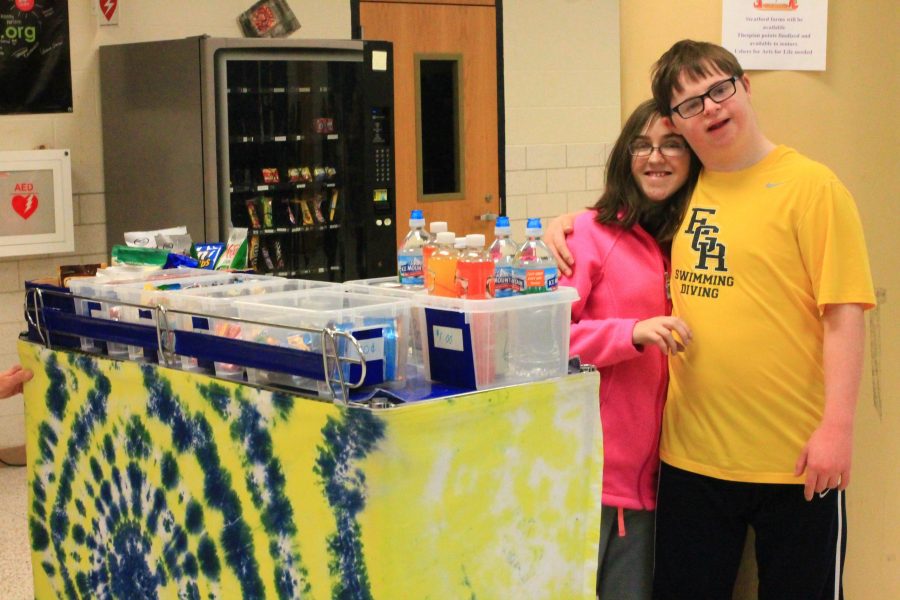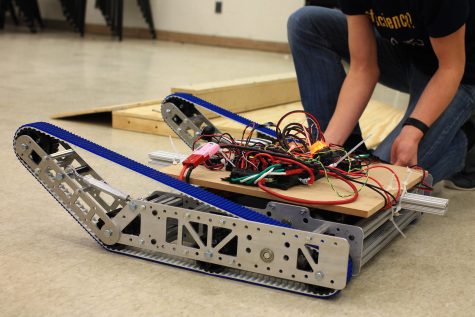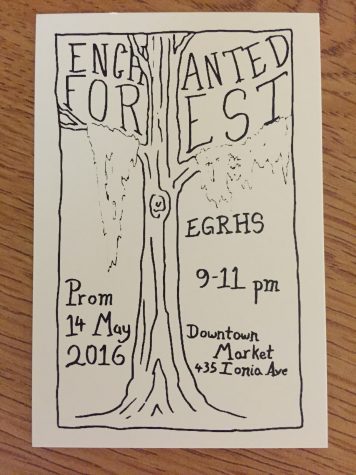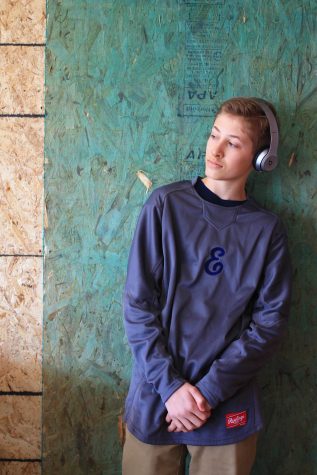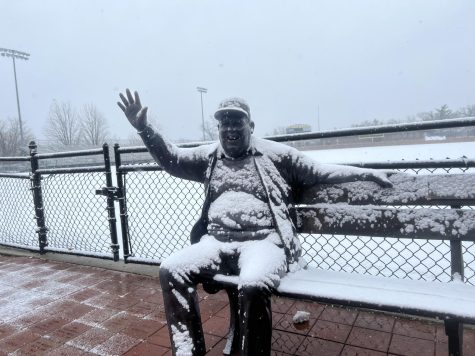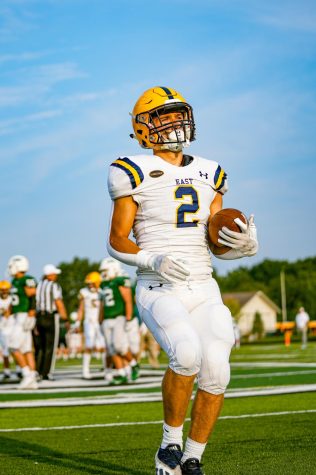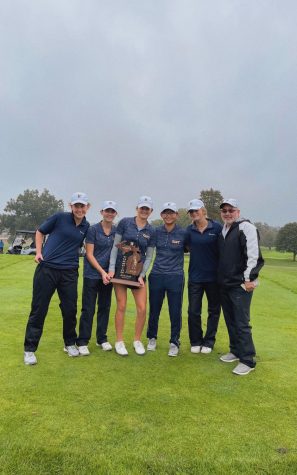Pioneer trading post
Store run by the special education class makes a difference in the school and community.
Left, Chris Boylen ‘19 and Emma Fiorenzo ‘17 pose by the Pioneer Trad- ing Post, where students can buy anything from a water bottle to a pack of gum.
On any given day, you can see dozens of students gathered around a small cart between classes in the upstairs hallway. To the untrained eye, these students may seem aimlessly gathered in the middle of the hall. East students, however, know that these carts are the home to the popular “Pioneer Trading Post”, run by the special education students and friends in Sandy Brooks’s class.
The original “Trading Post” store wasn’t founded in the school, but rather right out- side of it. Decades ago, the store, located where one could now find Jose Babushka’s, was a popular destination to which students would go after school. Years later, the idea resurfaced, and has been a big success ever since.
“[It started] about seven years ago,” Brooks said. “We were looking for a way to give [my students] some real life and social skills. There are all sorts of benefits [for the kids]. When we started, we would practice counting money, and it would all of a sudden become real when we put a mean- ing behind it. They earn money for working, so that gives them some occupational skills and an incentive to work. We teach them to be on time, and they get paid for being on time and they get paid for putting things away.”
Not only is the store very beneficial for the students involved and the customers they sell to, but it is also almost completely student-run.
“[The students] make their own lists, they go to the grocery store, they take their money to the store, and they learn the con- nection of earning money and then spend- ing money,” Brooks said.
But the Trading Post didn’t become this successful overnight; the store itself started off relatively small.
“It started out as one little box of candy, and that started selling,” Brooks said. “Eventually, we replaced that one box [with] a variety pack, and soon we had enough money that we could buy more items, [like] a variety pack and a pack of M&Ms, and we’ve just grown from there.”
From there, the Trading Post has grown progressively every year; where the store used to sell only a handful of items, you now have around 40 different items to choose from on any given day.
It hasn’t been easy to keep such a wide range of products for so long, h o w – ever, especially over the past few years.
“Last year, we took a big hit when we had to follow the govern- mental rules and laws about having to sell healthy food in schools,” Brooks said. “We make about half of what we did before. Which is fine; it buys what we need to buy. We still [have enough to] buy next week’s product with last week’s profit.”
Thankfully, the store has been able to recover over the past year and a half, almost reaching the profits they had made in the past.
With the return of the popularity of the Trading Post, Brooks’s class is think- ing about bringing back old philanthropic activities, using their success to benefit the community around them.
“We used to pack 100 snack bags and give them to Kids’ Food Basket,” Brooks said. “We’d put the snack bags together as a class. So we’d have enough profit, enough extra, to give back to the community, too, so it was a good lesson to the kids on how to give back to their communities, too. We’re probably there again, we’ve just been so busy with the kids that we haven’t had the time to do anything like that. We’d definitely like to revisit that. That was not only a way to give back to the community, but it offered another job-type skill for them, to pack these bags and to plan what needed to go into them and stuff like that.”
With big plans like these in the future, it’s no wonder that the store has been such a success for such a long time.
“It’s been fun,” Brooks said.“It’s been a lot of fun, really. I don’t know how to explain it; it’s just a lot of fun.”


